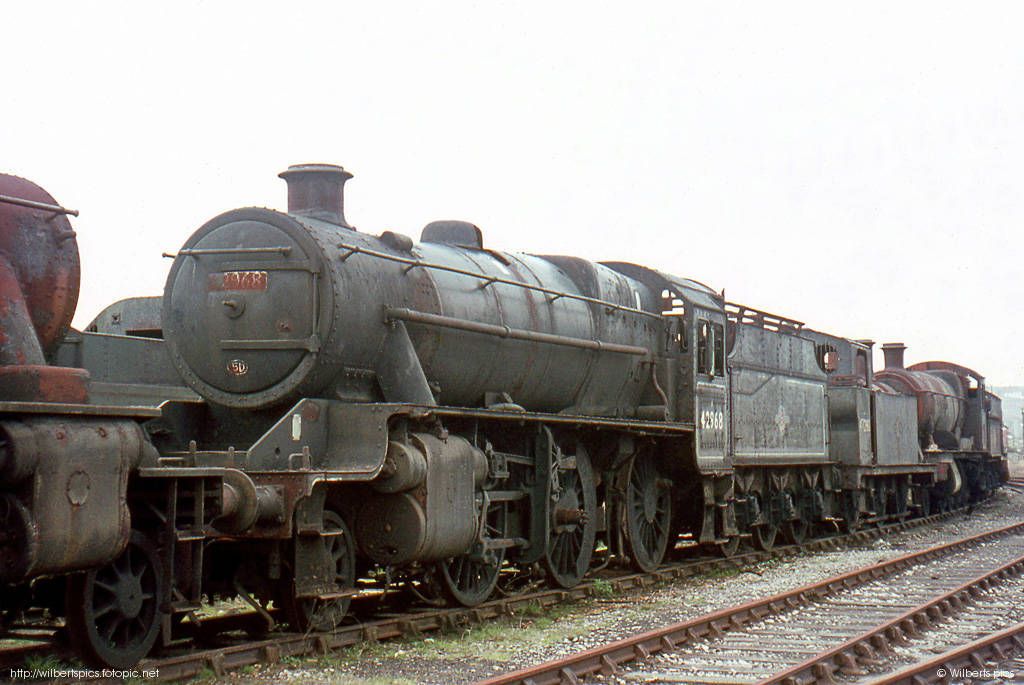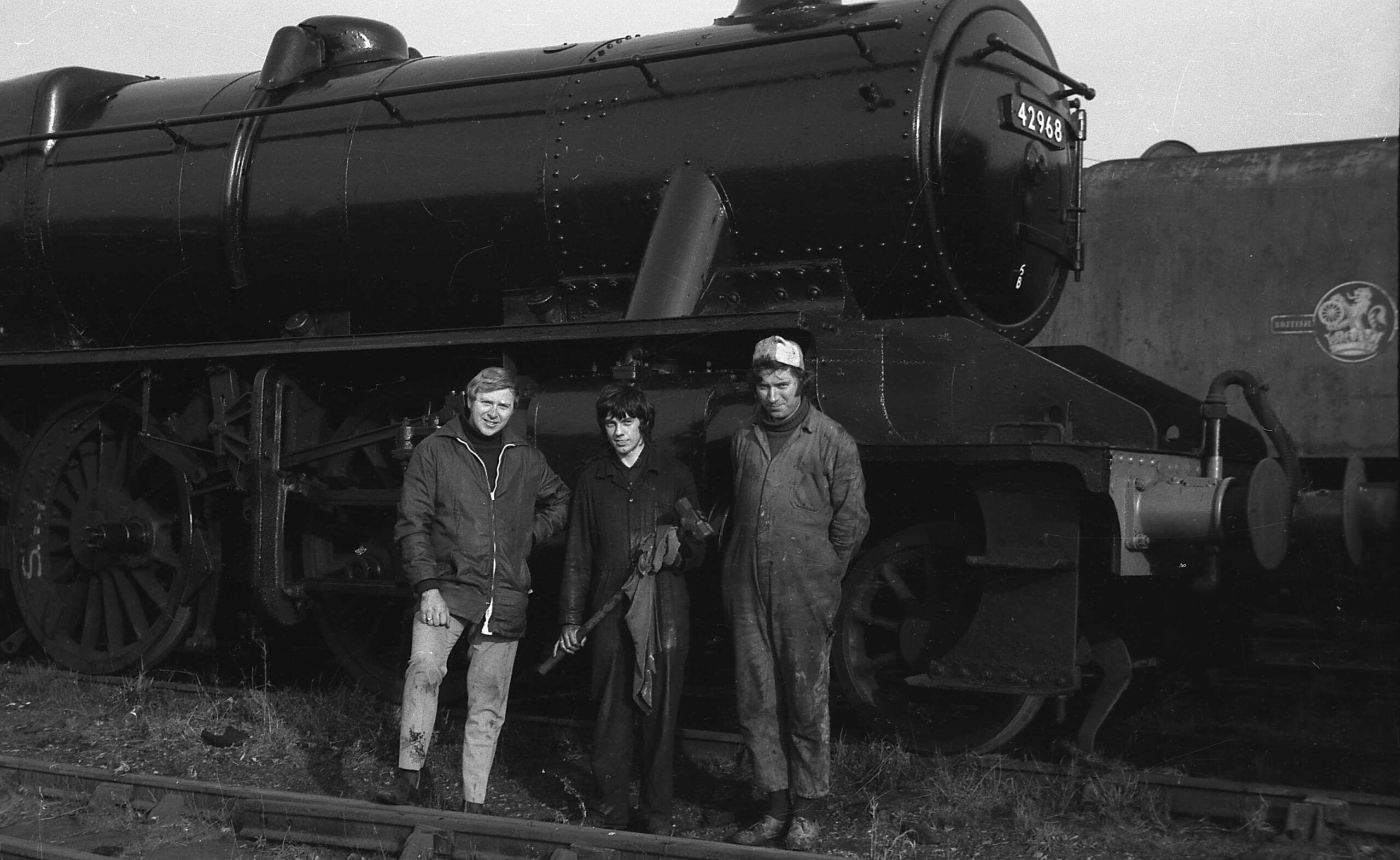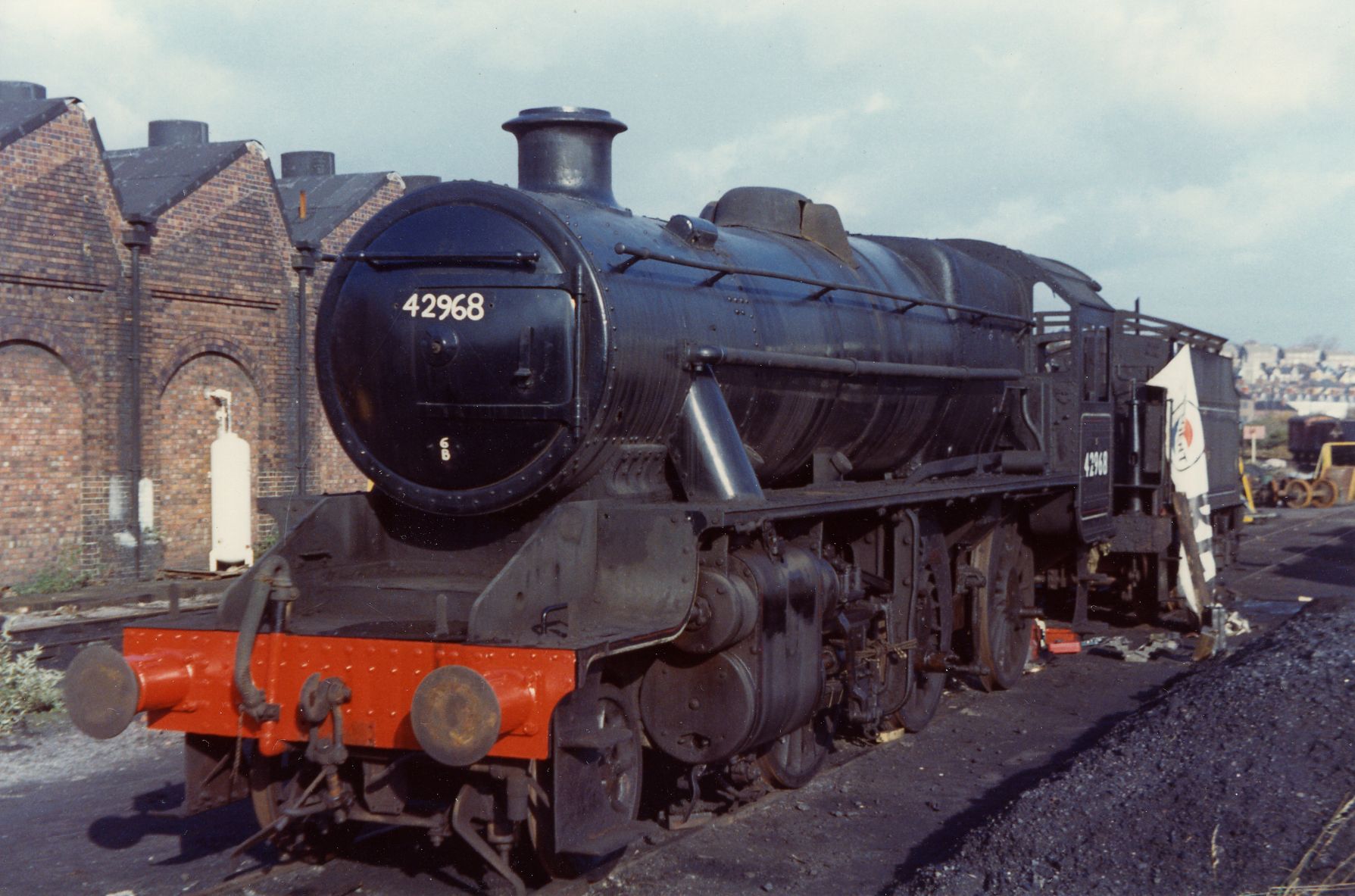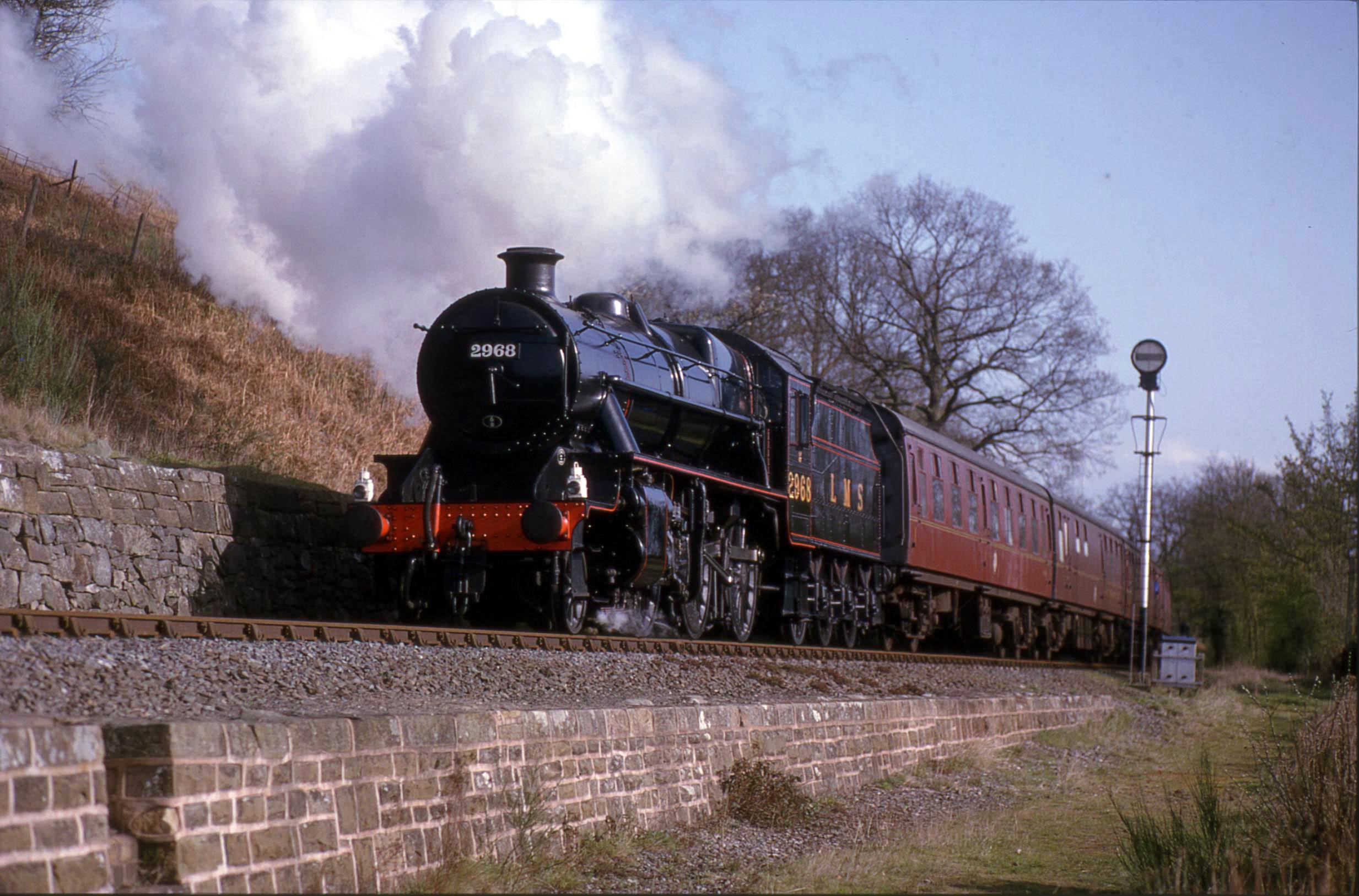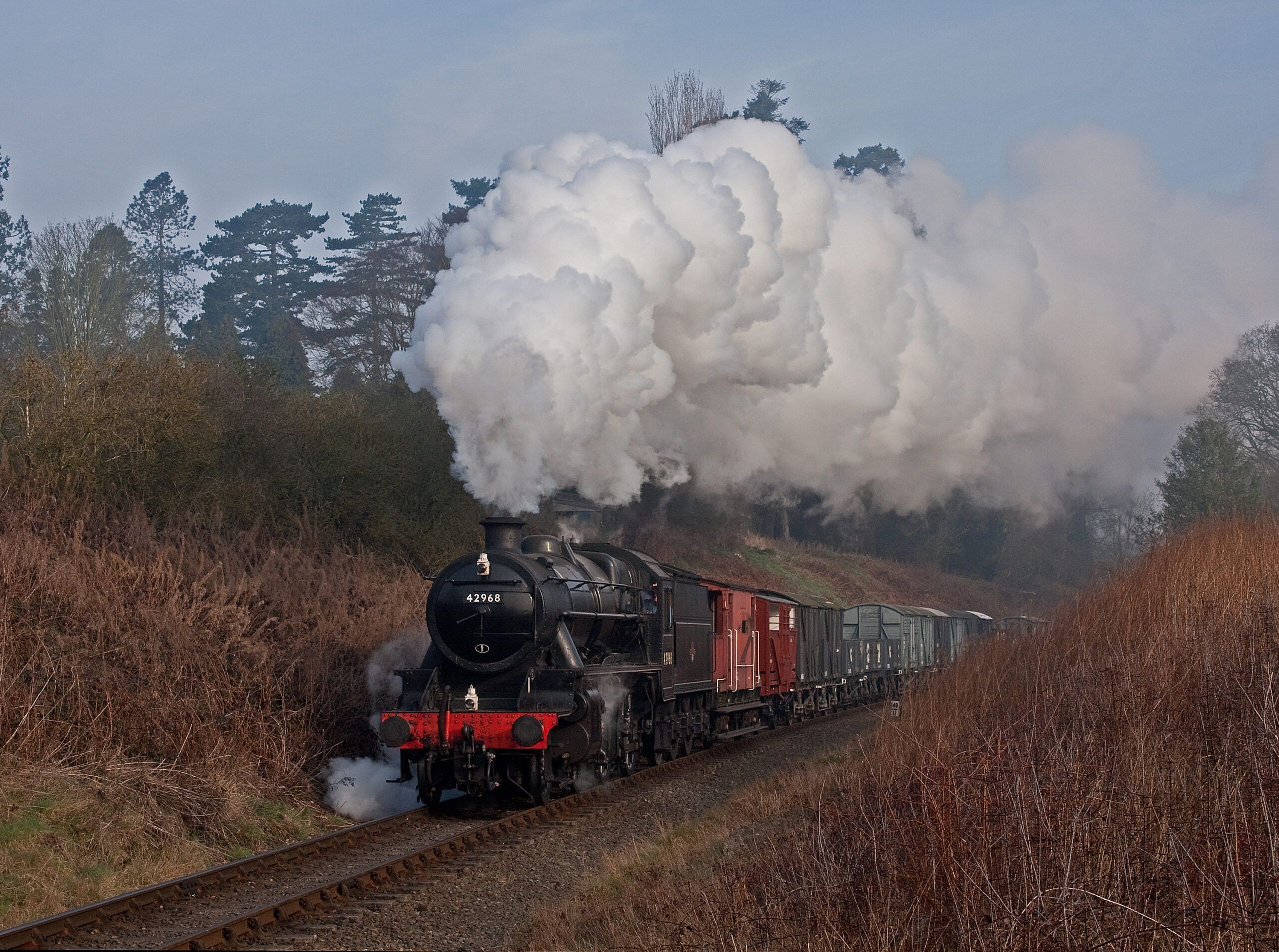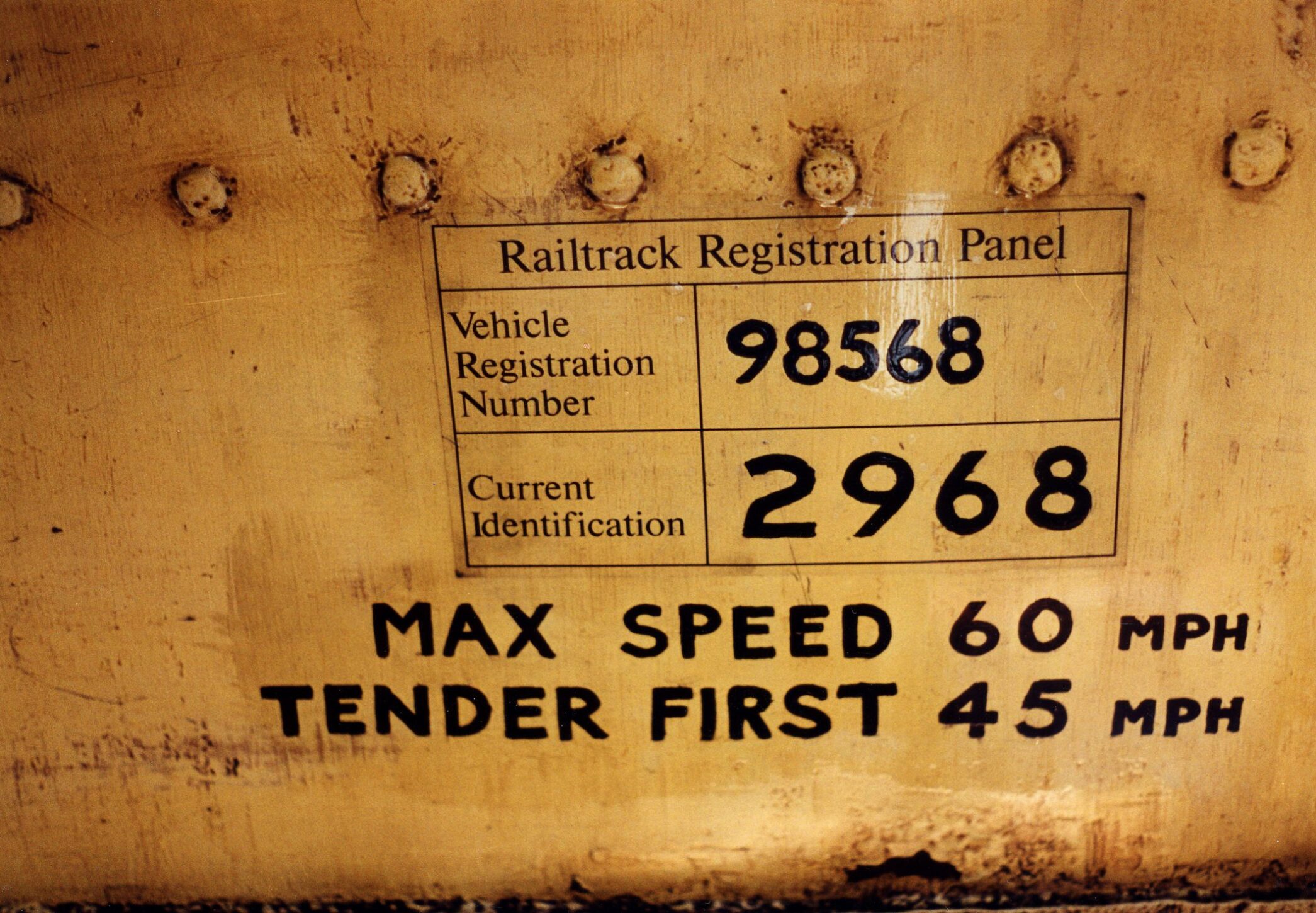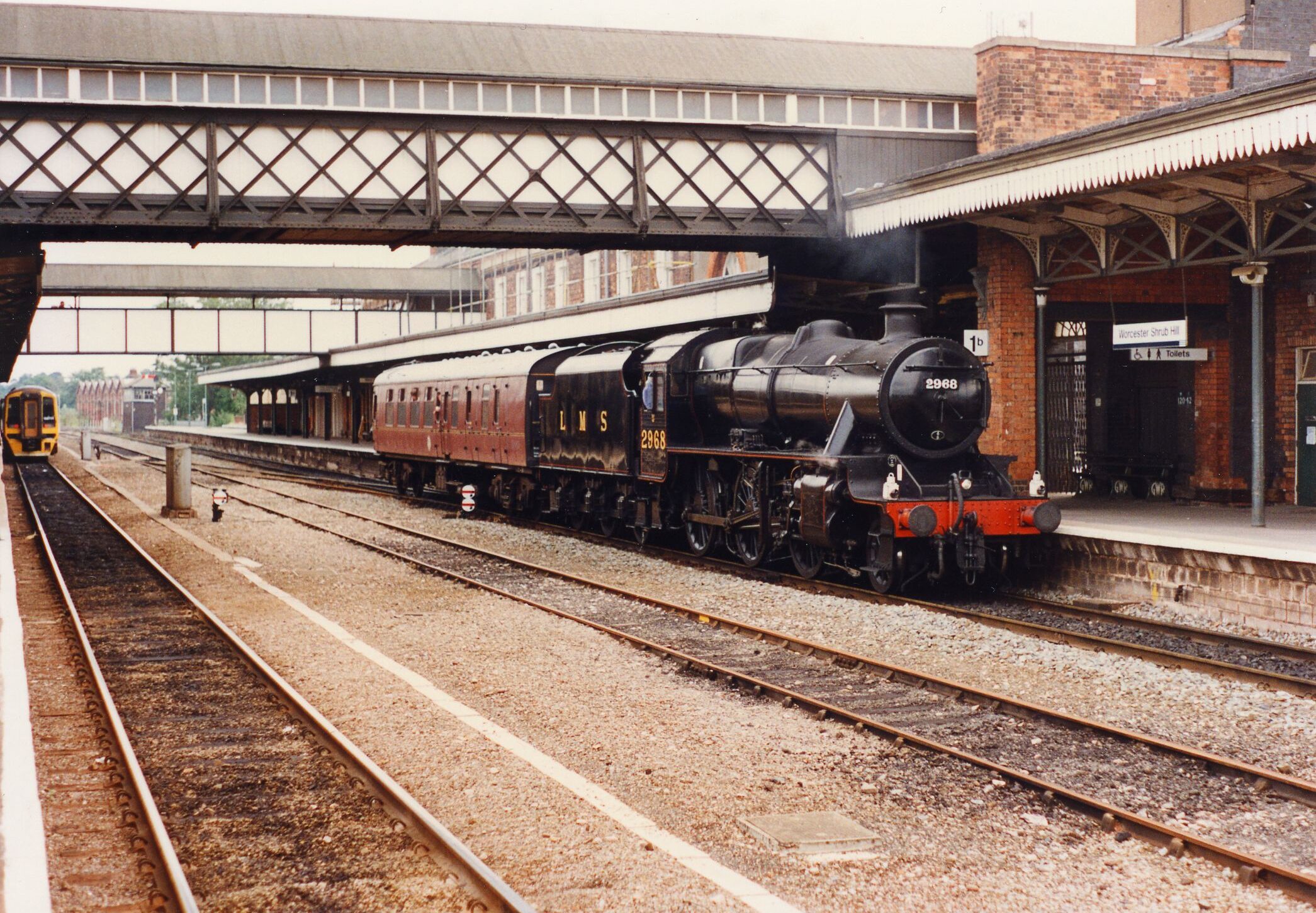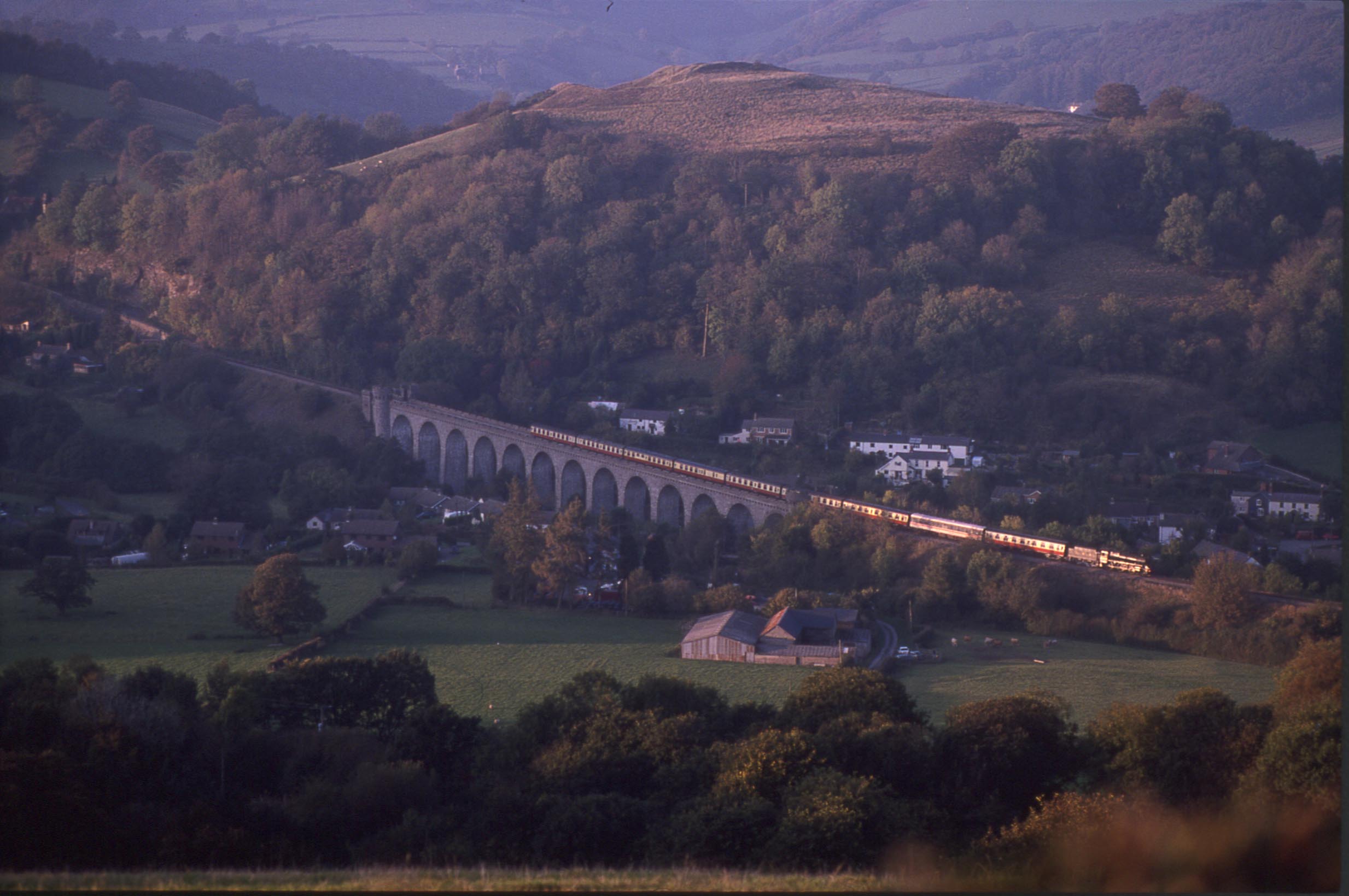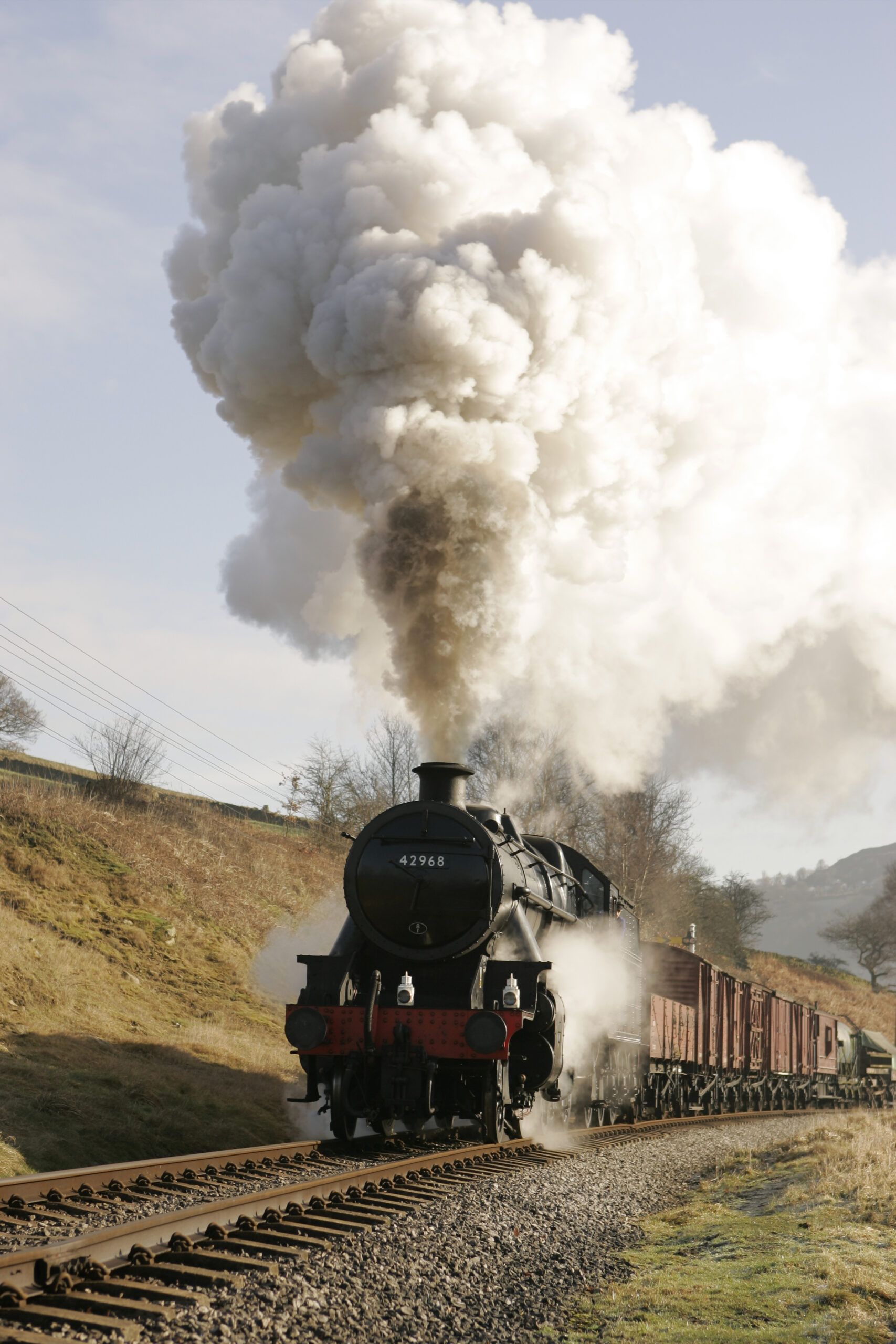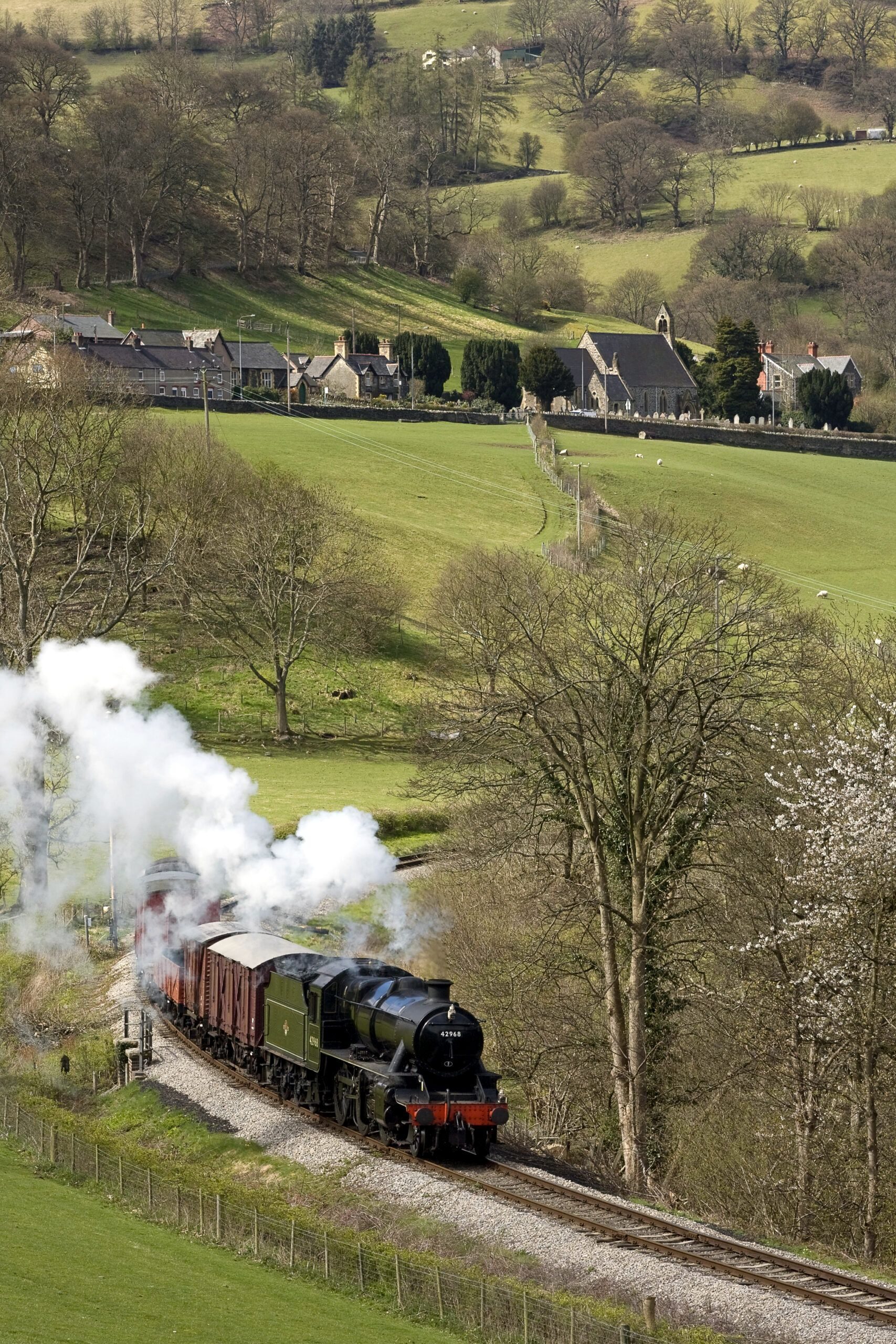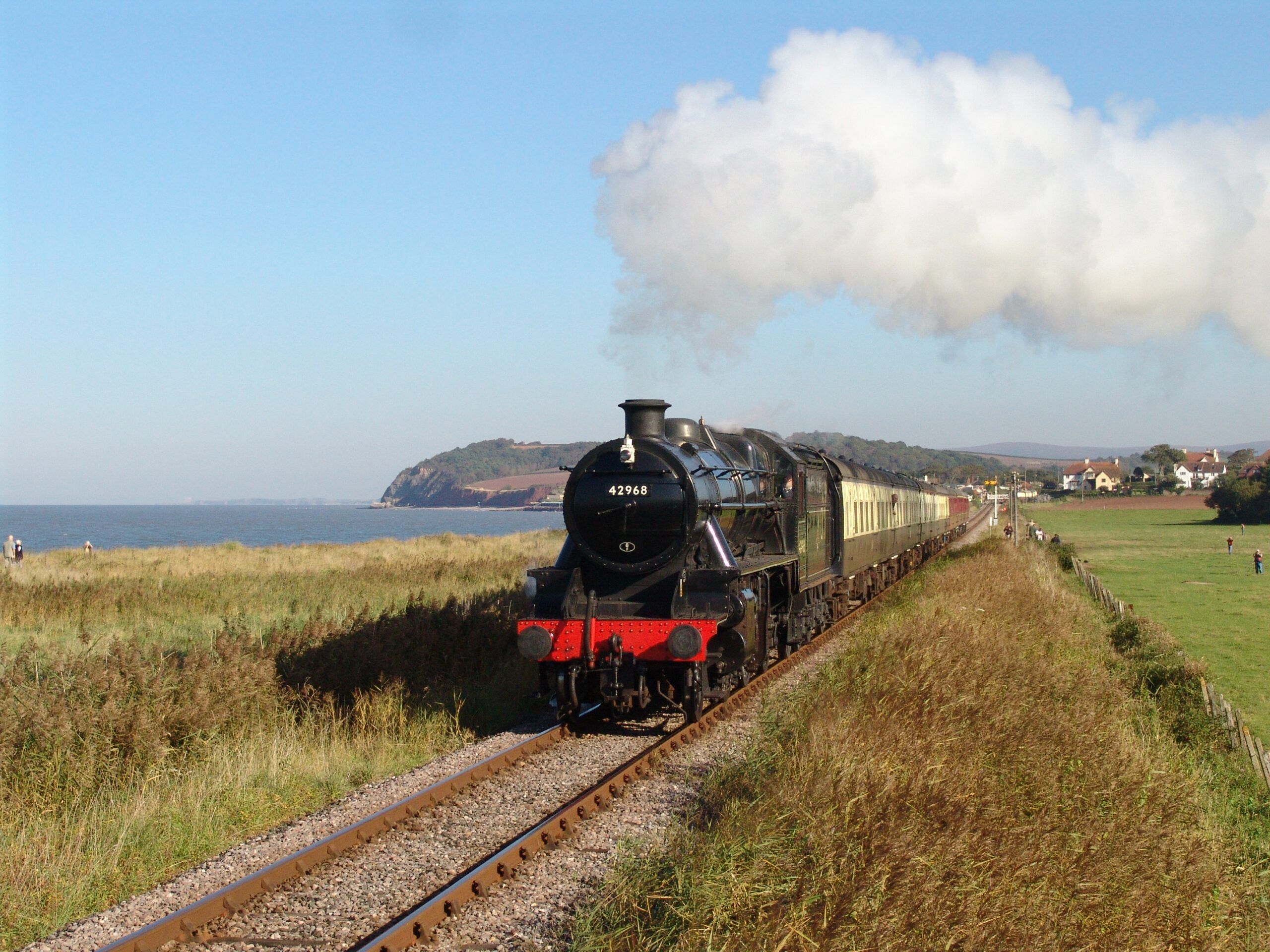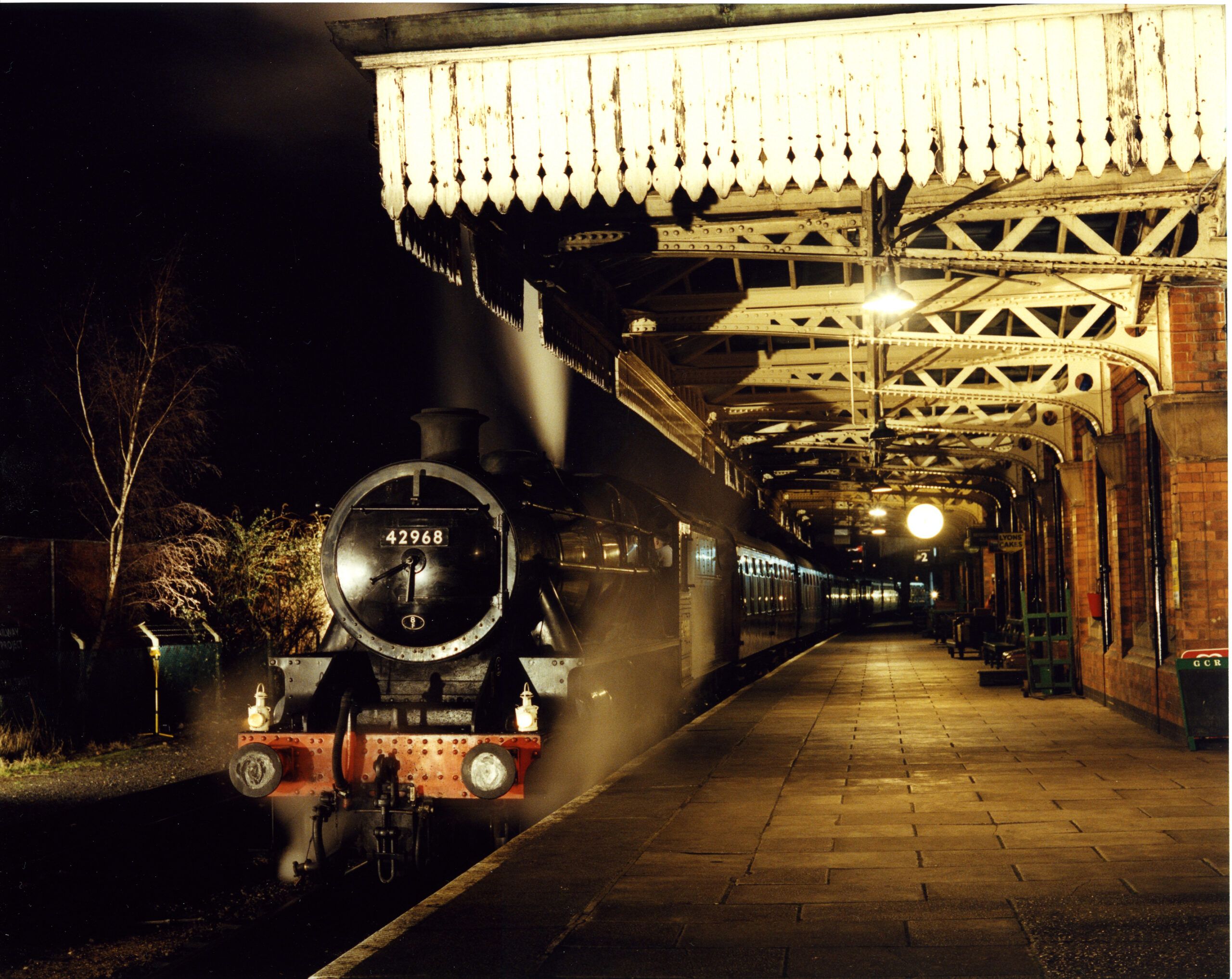The Stanier Moguls were arguably the first design of locomotive by the LMS’s new Chief Mechanical Engineer, William Stanier. 13245 appeared on 21st October 1933, some four months after 6200 “The Princess Royal”, although the latter had been rushed through production as a ‘prestige’ engine. 13245 was followed by 39 sisters, 13246 – 13284, the latter delivered to traffic on 7th March 1934. From 1934, all were renumbered in the 2945 – 2984 range, with British Railways adding 40000 to their numbers from 1948. All were built as a single series to Lot No. 104. Originally they were given Power Class 4F, but this was soon altered to 5P4F, 5P5F, and, in BR Days, reached 6P5F, although 5MT was more realistic.
The class was based on George Hughes’ very successful ‘Horwich Crab’ 2-6-0s, but Stanier used a higher pressure, tapered boiler which allowed smaller cylinders to be mounted at a more usual height above the rails. They originally had the usual low-degree superheat from 14 elements, but in common with other Stanier classes, this was later increased to 21 elements. The original nine had square topped cylinders, and these plus the tenth had their safety valves mounted on the top feed, as with GWR practice. On the first twenty the boiler cladding sheets followed the contour of the barrel below, so that there was a parallel front section with all the taper concentrated to the rear. The next twenty had a continuous taper from smokebox to firebox, to which profile the others were eventually modified. The first thirty had a Midland-type “bell” whistle, but a Stanier Caledonian-type hooter was fitted to the final ten. They were all built before the introduction of Stanier’s curved-topped 4000 gallon tender, so were fitted with the then standard Fowler 3,500 gallon type, which they retained throughout their lives.
All were built at Crewe, but were allocated to Horwich for repair. This situation was changed from December 1963, when repairs were reallocated to, of all places, Swindon. They were always painted black, with red lining in LMS days and BR’s mixed traffic LNWR-derived red, cream and grey lining from 1948. Some war-time repaints were into plain black without lining.
As mixed traffic engines, the original Horwich Crabs had on introduction been used on fast, express passenger work but by 1933 had largely been supplanted on this traffic. The Moguls immediately took on the same work as the Crabs: secondary passenger and excursions; parcels; fast fitted freights and general goods work, the same traffic they were still working into the 1960s.
Originally, the Moguls were allocated to all four Divisions of the LMS, but within a few years had been concentrated on the Western Division. Their usual haunts were Willesden, Crewe (mostly South, but also North), Birmingham area, Birkenhead and Mold Jct., although many other sheds had an allocation for at least a few years.
Post war, they still managed to make frequent appearances on all parts of the LMS system south of Carlisle, with invasions of LNER and GWR territory being not infrequent. Although mixed traffic engines, their small wheels were more suited to the slower end of such work, like the Horwich Crabs, and they specialised in fast fitted goods, parcels, secondary passengers trains and excursions, all of which they worked turn and turn about with the later Black Fives. They were also commonly allocated to heavy freight working, where those small wheels gave them an advantage over the Black Fives, which were more at home with faster, express passenger work than the 2-6-0s. They lasted well into the run-down of BR steam, the first withdrawal being 42976 from 20th July 1963, the last being 42954 on 11th February 1967.
Our locomotive: 13268-2968-42968
13268 entered traffic on 24th January 1934 and was originally allocated to Willesden mpd. She was always a Western Division engine. 42968 was the penultimate class member in service lasting until 31st December 1966. Highlights of her career were use on the 8.40 Bournemouth – Bradford Exchange express via the Lickey Incline on 8th August 1959, working the train from Bath probably as far as Derby; on 31st December 1958 she took over from 46239 “City of Chester” when this engine failed at Carnforth with a hot big end, working the train forward as far as Crewe where a more appropriate 46220 “Coronation” relieved her.
She had covered 713,561 miles for the LMS and BR by the end of 1960, when records ceased. She carried six boilers throughout her life, the last one, No. 8412, being fitted during a Heavy General overhaul from 12th August to 26th September 1957. She took tender No. 4537 which she retained throughout her life, except for two occasional periods coupled to a Stanier 4000 gallon type during preservation. Her last recorded working was on 14th December 1966 when she was seen passing Preston on the 6:35pm parcels train ex-Liverpool Lime Street Station.

